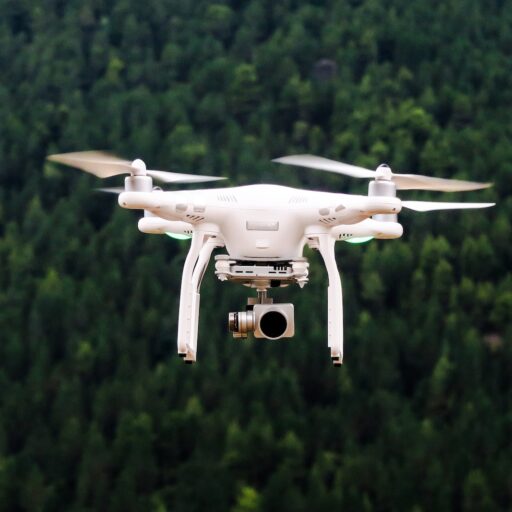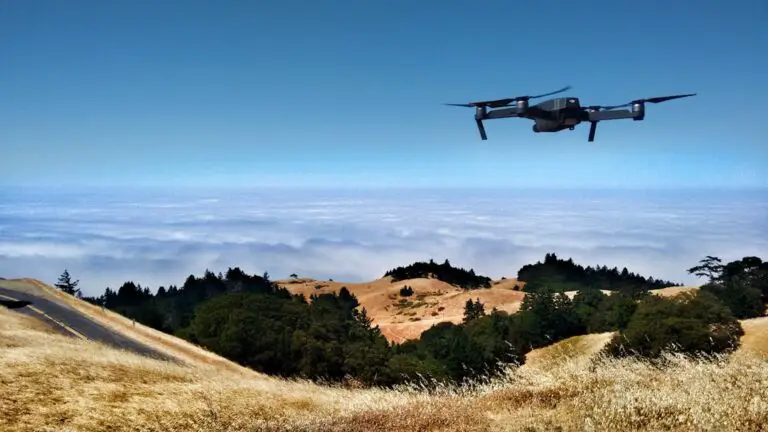Support our educational content for free when you purchase through links on our site. Learn more
Drone Statistics Worldwide (2025): 10 Eye-Opening Facts You Must Know 🚁
Ever wondered just how many drones are buzzing across the globe right now? Or which countries are leading the charge in drone technology and revenue? Spoiler alert: the numbers might surprise you! From backyard hobbyists capturing breathtaking aerial selfies to multinational companies revolutionizing agriculture and infrastructure, drones have become a global phenomenon reshaping industries and lifestyles alike.
In this deep dive, we’ll unpack the latest worldwide drone statistics, reveal the top players dominating the skies, and share real-world success stories that show drones are more than just flying gadgets—they’re powerful tools transforming our world. Plus, stick around for insider tips on navigating the complex regulatory maze and discover which emerging technologies will skyrocket the drone market in the coming years.
Ready to take off? Let’s explore the fascinating universe of drones through 10 eye-opening facts that every pilot, entrepreneur, and enthusiast should know!
Key Takeaways
- Global drone market revenue is soaring, projected to reach over $4 billion by 2025, driven by commercial and consumer demand.
- Over 10 million drones are expected to be sold annually by 2030, with China and the US leading production and adoption.
- DJI dominates the market, but challengers like Autel Robotics and Skydio are innovating rapidly.
- Commercial applications—from agriculture to emergency services—are fueling explosive growth, creating new business opportunities worldwide.
- Regulations are evolving fast, with Remote ID and BVLOS flights shaping the future of safe drone operations.
- Battery life and public acceptance remain key challenges, but breakthroughs in AI and connectivity promise exciting advancements.
👉 Shop Top Drone Brands:
- DJI Drones: Amazon | Walmart | DJI Official Website
- Autel Robotics Drones: Amazon | Autel Official Website
- Skydio Drones: Amazon | Skydio Official Website
Table of Contents
- ⚡️ Quick Tips and Facts: Your Drone World Snapshot
- 🕰️ From Hobby to High-Tech: A Brief History of Drone Market Growth
- 💰 The Sky-High Value: Global Drone Market Revenue & Economic Impact
- 📦 Drone Deployment & Volume: How Many Drones Are Really Flying?
- 🏆 Who’s Leading the Pack? Key Players in the Drone Industry
- 📊 Key Market Indicators & Future Projections: What’s Next for Drones?
- 🛒 How Drones Reach You: Sales Channels & Distribution Networks
- ⚖️ The Regulatory Maze: Navigating Drone Laws & Compliance Worldwide
- 💡 Beyond the Hype: Real-World Drone Applications & Success Stories
- 1. Agriculture: Precision Farming from Above
- 2. Construction & Infrastructure: Building Smarter, Faster
- 3. Public Safety & Emergency Services: Drones to the Rescue
- 4. Delivery & Logistics: The Future of Last-Mile Transport
- 5. Media & Entertainment: Capturing the Unseen
- 6. Environmental Monitoring: Guardians of Our Planet
- 7. Inspection & Maintenance: Eyes in the Sky
- 8. Mapping & Surveying: Creating Digital Worlds
- 🚧 Challenges & Opportunities: What’s Holding Drones Back (and Pushing Them Forward)?
- 🤔 Our Expert Methodology: How We Analyze Drone Market Data
- 🎯 Conclusion: The Sky’s Not the Limit, It’s Just the Beginning!
- 🔗 Recommended Links: Dive Deeper into the Drone World
- ❓ FAQ: Your Burning Drone Questions Answered
- 📚 Reference Links: Our Sources for Sky-High Stats
Here at Drone Brands™, we live and breathe all things that fly. From unboxing the latest DJI marvel to navigating the complex world of FAA regulations, our team of seasoned pilots has seen it all. We’re here to cut through the noise and give you the real scoop on the state of the drone world. So, buckle up, check your props, and let’s get airborne with the most comprehensive look at drone statistics you’ll find anywhere.
⚡️ Quick Tips and Facts: Your Drone World Snapshot
Pressed for time? Here’s the 30-second pre-flight check on global drone stats. These are the numbers that make our jaws drop and get us excited for the future.
- Massive Market Growth: The global drone market is a beast! It’s projected to hit US$4.37 billion in revenue by 2025. That’s a lot of flying robots! 🤖
- Volume is Exploding: By 2030, experts predict there will be over 10.5 million drones sold annually. Imagine all that buzzing!
- China Leads in Revenue: While the US is a huge market, China is forecast to generate the most revenue in 2025, clocking in at a staggering US$1.6 billion, according to Statista.
- Commercial Use is Booming: It’s not just for fun anymore. Drones are becoming essential tools in agriculture, construction, and public safety. This is one of the fastest-growing Drone Business Opportunities.
- DJI is King 👑: Shenzhen-based DJI dominates the consumer and prosumer market, holding a massive market share (often cited as over 70%).
- Regulations are Evolving: Governments worldwide are scrambling to keep up. Staying on top of the latest Drone Laws and Regulations is crucial for every pilot.
- Prices are Dropping: Good news for you! As Statista notes, “The overall trend in average drone prices is declining due to lower production costs and material prices.” This makes getting into the hobby or business easier than ever.
🕰️ From Hobby to High-Tech: A Brief History of Drone Market Growth
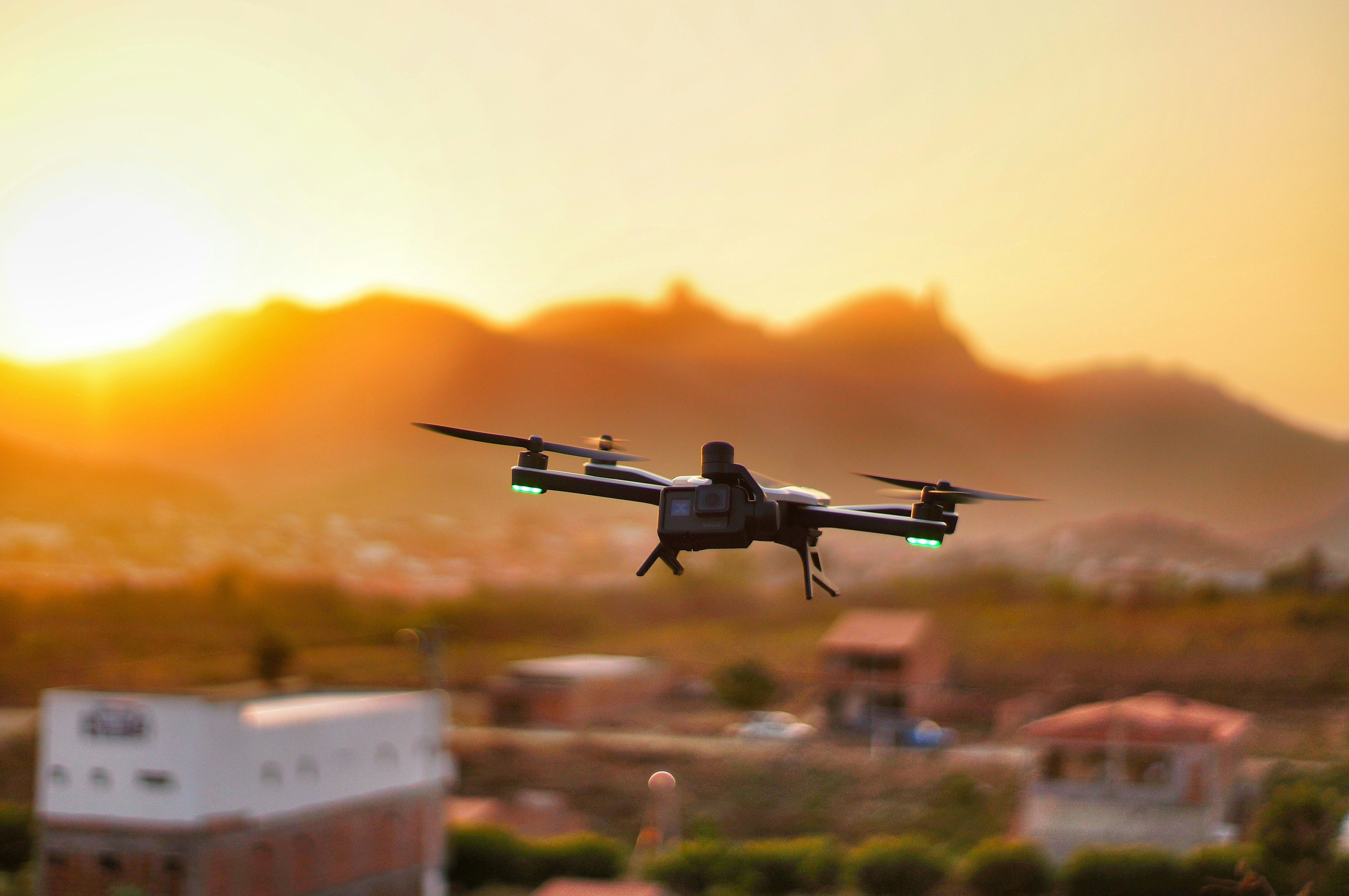
Remember when drones were clunky, expensive gadgets for the most dedicated (and wealthy) tech nerds? We do! My first “drone” was a Parrot AR.Drone back in 2010, controlled clumsily by an iPod Touch. It was a miracle if you could keep it in the air for 7 minutes without it getting swept away by a light breeze.
Oh, how times have changed!
The journey from those early toys to the sophisticated Unmanned Aerial Vehicles (UAVs) of today has been nothing short of meteoric. The real turning point was the launch of the DJI Phantom 1 in 2013. It was the first ready-to-fly quadcopter that was relatively affordable, easy to use, and came with a mount for a GoPro. It single-handedly created the consumer aerial photography market.
From there, innovation exploded:
- Integrated Cameras: No more strapping on your own camera. Drones started coming with high-quality, gimbal-stabilized cameras built-in.
- GPS & Stability: Drones could suddenly hold their position perfectly, even in wind, making them accessible to absolute beginners.
- Obstacle Avoidance: This was a game-changer, saving countless drones from an untimely demise by tree branch.
- Intelligent Flight Modes: “Follow me,” “Orbit,” and pre-programmed cinematic shots turned average Joes into aerial cinematographers overnight.
This rapid evolution transformed drones from a niche hobby into a global phenomenon, paving the way for the multi-billion dollar industry we see today.
💰 The Sky-High Value: Global Drone Market Revenue & Economic Impact
Let’s talk money. The numbers surrounding the drone industry are staggering and paint a clear picture of an industry in its prime growth phase. It’s not just about selling hardware; it’s about the entire ecosystem of software, services, and the economic value they unlock.
📈 Commercial Drone Market: Soaring Sectors & Key Applications
This is where the most explosive growth is happening. Businesses are realizing that drones are not just cool tech; they are force multipliers that save time, reduce costs, and improve safety.
| Sector | Key Drone Applications | Estimated Impact |
|---|---|---|
| Agriculture | Crop monitoring, pest detection, precision spraying, soil analysis | Increased yields, reduced chemical use |
| Construction | Site surveying, progress monitoring, safety inspections, 3D modeling | Improved project management, enhanced safety |
| Energy & Utilities | Power line inspection, wind turbine maintenance, solar farm analysis | Reduced downtime, safer inspections |
| Public Safety | Search and rescue, accident scene reconstruction, fire monitoring | Faster response times, improved situational awareness |
| Logistics | Last-mile delivery, warehouse inventory management | Increased efficiency, faster delivery (in trial phases) |
Companies like Globhe are a perfect example of this new economy. They’ve built a platform connecting businesses that need aerial data with a network of over 11,000 professional drone operators in 147 countries. Need a 3D model of a construction site in Kenya? There’s a pilot for that. This “Drones as a Service” (DaaS) model is a huge part of the commercial market’s value.
🎮 Consumer Drone Market: Flying High with Hobbyists & Enthusiasts
While the commercial side gets a lot of headlines, the consumer market is the bedrock of the industry. This is where most of us get our start, and it’s what drives the volume and brand recognition that fuels the giants like DJI.
The market is broadly split into a few categories:
- Toy Drones: Sub-$100 drones, perfect for kids and learning the absolute basics. Think brands like Ryze with their Tello drone.
- Beginner/Hobbyist Drones: This is the sweet spot for most people. Drones like the DJI Mini series offer incredible camera quality and flight performance in a small, affordable, and often regulation-friendly package. Check out our guide to the best Beginner Drones.
- Prosumer Drones: For serious photographers, videographers, and enthusiasts who demand the best. This is the realm of the DJI Mavic 3 and Autel EVO II Pro. They boast larger sensors, longer flight times, and advanced features.
As Statista highlights, “advances in technology, such as longer battery life, improved camera quality, and obstacle avoidance, are making drones more versatile,” which keeps pulling more and more consumers into the fold.
📦 Drone Deployment & Volume: How Many Drones Are Really Flying?
Revenue is one thing, but the sheer number of drones taking to the skies is another. How many are out there? It’s a tough number to pin down perfectly, but we can look at sales projections and registration data for a clear picture.
Statista projects the market will reach 10.51 million units sold annually by 2030. That’s a massive increase and points to a future where drones are a common sight.
In the United States alone, the Federal Aviation Administration (FAA) reports hundreds of thousands of registered drones. As of late 2023, there were:
- ✅ Over 350,000 registered commercial drones.
- ✅ Over 450,000 registered recreational drones.
- ✅ Over 300,000 certified Remote Pilots.
And that’s just the ones that are officially registered! It’s safe to say there are millions of drones in operation around the globe right now.
🌍 Regional Drone Market Dynamics: A Global Comparison
The drone story isn’t the same everywhere. Different regions have unique market characteristics, regulatory environments, and key players.
North America: Innovation Hub & Regulatory Landscape
The U.S. and Canada are at the forefront of commercial drone integration. The FAA’s Part 107 rule was a landmark piece of legislation that created a clear pathway for commercial drone operations. This has spurred incredible innovation in drone software and services, with countless startups tackling everything from automated flight to data analysis. The U.S. is a leader in venture capital funding for drone tech and is home to key players like Skydio, known for its world-class autonomous flight capabilities.
Europe: Balancing Growth and Privacy
Europe is a massive and sophisticated market, but it’s also more fragmented. The European Union Aviation Safety Agency (EASA) has implemented a unified set of rules across member states, which is a huge step forward. These rules categorize drones based on risk, making it easier for operators to know what’s required. There’s a strong emphasis on privacy and data protection here, which shapes both public perception and technological development. France’s Parrot is a key European manufacturer, focusing heavily on the professional and enterprise markets.
Asia-Pacific: The Powerhouse of Production & Adoption
This region is the undisputed king of drone manufacturing, led by China’s DJI. The sheer scale of production in Shenzhen has made high-quality drones accessible globally. But it’s not just about manufacturing. Countries like Japan and Australia are rapidly adopting drones in agriculture and mining, respectively. As Statista points out, China is set to generate the highest revenue globally, a testament to its dual role as a producer and a massive domestic market.
Rest of World: Emerging Markets & Untapped Potential
Regions like Africa, South America, and the Middle East represent a huge area of untapped potential. Drones are being used in incredible ways, from delivering medical supplies in Rwanda (Zipline is a pioneer here) to monitoring deforestation in the Amazon. As connectivity improves and regulations become clearer, these emerging markets are poised for explosive growth in drone adoption.
🏆 Who’s Leading the Pack? Key Players in the Drone Industry
Every industry has its titans, and the drone world is no different. A few key companies have shaped the market, pushing the boundaries of what’s possible. Here at Drone Brands™, we’ve flown them all, and we have our favorites. You can check out our in-depth Drone Brand Guides for more.
Top Drone Manufacturers: The Giants of the Sky
When it comes to the drones themselves, a few names stand head and shoulders above the rest.
| Manufacturer | Key Strengths | Popular Models | Our Take |
|---|---|---|---|
|
DJI |
Market dominance, innovation, ease of use, vast product ecosystem | Mini Series, Air Series, Mavic Series, Inspire Series | The Apple of the drone world. Their products just work, and they set the standard for everyone else. You can’t go wrong with a DJI. |
|
Autel Robotics |
Strong competition for DJI, excellent camera quality, no forced geofencing | EVO II Series, EVO Lite+, Dragonfish | The primary challenger to DJI’s throne. They make fantastic drones, especially for professionals who value flexibility and top-tier optics. |
|
Parrot |
European manufacturing, focus on enterprise & defense, thermal imaging | Anafi Ai, Anafi USA | A pioneer that has shifted its focus to the high-end commercial and government sectors. Their drones are rugged, secure, and purpose-built. |
|
Skydio |
Unmatched autonomous flight, industry-leading obstacle avoidance | Skydio 2+, Skydio X2 | The brains of the drone world. If you need a drone that can fly itself through complex environments for inspection or cinematography, Skydio is in a class of its own. |
👉 Shop Top Drone Brands:
- DJI Drones: Amazon | Walmart | DJI Official Website
- Autel Robotics Drones: Amazon | Walmart | Autel Official Website
- Parrot Drones: Amazon | Parrot Official Website
Software & Service Providers: Powering the Drone Ecosystem
The hardware is only half the story. A massive industry has sprung up to help people manage fleets, process data, and fly safely.
- Flight Control & Planning: Apps like DroneDeploy and Pix4D automate complex mapping and modeling missions.
- Data Analysis: Companies turn the thousands of images a drone captures into actionable insights, like 3D models or crop health maps.
- Airspace Intelligence: Services like Aloft (formerly Kittyhawk) provide real-time airspace maps, weather, and LAANC authorization for flying in controlled airspace in the US.
- Drone Service Marketplaces: As mentioned, Globhe connects pilots with jobs, creating a global gig economy for drone operators.
📊 Key Market Indicators & Future Projections: What’s Next for Drones?
So, where is this all headed? We’re constantly tracking the latest Drone Industry News to stay ahead of the curve. The future looks even more exciting than the present.
Investment Trends: Where the Smart Money is Flying
Venture capital investment is a great indicator of where the industry is going. While hardware investment has cooled slightly (it’s hard to compete with DJI), money is pouring into:
- ✅ Drone Autonomy & AI: Software that makes drones smarter, safer, and capable of operating without a human in the loop.
- ✅ Drone Delivery: Companies like Zipline and Wing (an Alphabet company) have attracted massive funding to solve the “last-mile” delivery problem.
- ✅ UTM (UAS Traffic Management): Think air traffic control, but for drones. This is the critical infrastructure needed to allow thousands of drones to operate safely in the same airspace.
Technological Advancements: The Next Generation of Drones
The tech is evolving at a breakneck pace. Here’s what we’re most excited about:
- Better Batteries: The holy grail! Solid-state batteries and hydrogen fuel cells promise to dramatically extend flight times from minutes to hours.
- 5G Connectivity: 5G will enable seamless, low-latency video streaming and command-and-control over long distances (BVLOS – Beyond Visual Line of Sight).
- Onboard AI: Drones that can identify objects, make decisions, and adapt to their environment in real-time. Imagine a search and rescue drone that can spot a person and automatically alert authorities without human intervention.
Regulatory Evolution: Navigating the Airspace
This is the big one. The future of advanced drone operations hinges on regulation. The key developments to watch are:
- Remote ID: This is like a digital license plate for drones, broadcasting identification and location information. It’s a foundational technology for safety and security, and it’s becoming mandatory in the US and Europe.
- BVLOS (Beyond Visual Line of Sight) Operations: The ability to fly drones over long distances is the key to unlocking services like pipeline inspection and large-scale delivery. Regulators are slowly but surely creating pathways for safe BVLOS operations.
🛒 How Drones Reach You: Sales Channels & Distribution Networks
Ever wonder how that shiny new drone gets from the factory to your doorstep? The distribution network is as sophisticated as the tech itself.
- Direct-to-Consumer (DTC): Most major brands, like DJI and Autel, have robust online stores. This is often the best place to find the latest products and bundles.
- Big-Box Retailers: You can walk into Best Buy or browse Amazon and Walmart to pick up a popular consumer drone. This channel is crucial for reaching the mass market.
- Specialty Drone Stores: These are often run by enthusiasts and experts (like us!). They provide specialized advice, repairs, and a curated selection of drones and accessories.
- Value-Added Resellers (VARs): In the commercial world, VARs don’t just sell a drone. They package it with the specific software, sensors (like LiDAR or multispectral cameras), and training a business needs to get a job done.
The trend is moving towards an omnichannel approach, where you can research online, maybe see the drone in a store, and then buy it wherever is most convenient.
⚖️ The Regulatory Maze: Navigating Drone Laws & Compliance Worldwide
Okay, let’s get serious for a moment. Flying a drone is an incredible amount of fun, but it comes with real responsibility. As pilots, we believe that safety and compliance are non-negotiable. Ignoring the rules not only puts you at risk of hefty fines but also gives all drone pilots a bad name. Our Drone Laws and Regulations section is a great resource to start with.
Certification & Licensing: Getting Your Wings
Gone are the days of just buying a drone and flying it anywhere. Most countries now have a system for certification.
- In the USA: For any commercial use (i.e., making money), you must have an FAA Part 107 Remote Pilot Certificate. For recreational flying with a drone over 250g, you need to register your drone and pass a simple online safety test called TRUST.
- In Europe: The EASA regulations create an “Open” category with sub-categories (A1, A2, A3) based on the drone’s weight and how you plan to fly it. Different levels of online tests and certifications are required.
- Always Check Local Rules: This is critical! Rules can vary not just by country, but by state, province, and even city.
No-Fly Zones & Airspace Restrictions: Staying Safe & Legal
You can’t just fly anywhere. Airspace is a shared resource, and safety is paramount.
- ❌ Airports: This is the biggest no-no. Stay at least 5 miles away from airports unless you have specific authorization (like LAANC in the US).
- ❌ National Parks: Most national parks (like Yosemite in the US) have banned drone flights to protect wildlife and preserve the natural experience.
- ❌ Stadiums & Sporting Events: Temporary Flight Restrictions (TFRs) are almost always in place over stadiums during events.
- ❌ Emergency Response Areas: Never fly over fires, accident scenes, or other emergencies. You can interfere with rescue operations.
- ✅ Use an App! Before every flight, use an app like Aloft or B4UFLY to check for airspace restrictions at your location.
Privacy Concerns & Data Security: Flying Responsibly
This is a huge public concern. A drone with a camera can be seen as an invasive tool if used irresponsibly.
- Be a Good Neighbor: Don’t fly low over private property or hover outside windows. It’s creepy and illegal in many places.
- Announce Your Intentions: If you’re flying in a park, let people around you know what you’re doing. Most people are just curious!
- Data Security: For commercial users, the data your drone collects can be highly sensitive. Use secure software and consider where your data is being stored, especially for critical infrastructure projects.
💡 Beyond the Hype: Real-World Drone Applications & Success Stories
We’ve talked about the stats and the market, but what are people actually doing with drones? This is the fun part. Here are 8 ways drones are changing the world, with stories from our own experiences.
1. Agriculture: Precision Farming from Above
A farmer friend of ours was struggling with inconsistent crop yields. We flew his 500-acre cornfield with a DJI Matrice 300 equipped with a multispectral sensor. The data created a health map that showed specific zones that were nitrogen-deficient. Instead of fertilizing the whole field, he used GPS to treat only the affected areas, saving thousands on fertilizer and boosting his yield by 15%. That’s a real-world win.
2. Construction & Infrastructure: Building Smarter, Faster
On a large commercial build, project managers were struggling to track progress. Weekly flights with a DJI Mavic 3 Enterprise allowed them to create 3D models of the site. They could overlay these models with the original blueprints to instantly spot discrepancies, track material stockpiles, and provide stunning visual updates to stakeholders.
3. Public Safety & Emergency Services: Drones to the Rescue
We work with a local search and rescue team. A hiker went missing in a densely wooded area. While ground teams searched, a pilot launched a drone with a thermal camera (Autel EVO II Dual 640T). Within 20 minutes, the drone detected a heat signature that ground crews couldn’t see. It was the lost hiker, cold but safe. Drones are literally life-savers.
4. Delivery & Logistics: The Future of Last-Mile Transport
While still in its early stages for most of us, drone delivery is a reality in some places. Wing operates in parts of Texas and Virginia, delivering small packages, food, and medicine directly to customers’ backyards. It’s fast, efficient, and completely electric. The future is arriving, one coffee delivery at a time.
5. Media & Entertainment: Capturing the Unseen
This is where most people see drones in action. From the sweeping opening shots of a Netflix series to incredible action sports videos, drones have revolutionized cinematography. We once used a high-speed FPV (First-Person View) drone to follow a mountain biker down a trail. The resulting footage was so dynamic and immersive it felt like you were on the bike yourself.
6. Environmental Monitoring: Guardians of Our Planet
Scientists are using drones to monitor coastal erosion, track wildlife populations without disturbing them, and even collect water samples from remote lakes. In one project, drones were used to plant thousands of seed pods in a deforested area, helping to reforest the land far faster than human teams could.
7. Inspection & Maintenance: Eyes in the Sky
Remember the story about the roof inspection? That’s just the tip of the iceberg. Drones are used to inspect massive wind turbines, cell towers, bridges, and power lines. This keeps human workers out of dangerous situations, saves a ton of money, and gets the job done in a fraction of the time.
8. Mapping & Surveying: Creating Digital Worlds
Land surveyors, who once spent days walking a site with traditional equipment, can now fly it in an hour and get data that is even more accurate. This data is used to create highly detailed topographic maps and 3D models, which are the foundation for everything from land development to flood plain analysis.
🚧 Challenges & Opportunities: What’s Holding Drones Back (and Pushing Them Forward)?
It’s not all blue skies and perfect flights. The industry faces some serious headwinds, but each challenge presents a massive opportunity for innovation.
Public Perception & Acceptance: Winning Hearts and Minds
The Challenge: Let’s be honest, headlines about “drone scares” at airports or privacy complaints get more clicks than “Drone Safely Inspects Bridge.” Public fear, fueled by a lack of understanding, is a major barrier.
The Opportunity: Education! As more people see the positive applications—like finding a lost hiker or delivering medicine—perception will shift. As responsible pilots, it’s on all of us to fly safely, respect privacy, and be ambassadors for the technology.
Battery Life & Endurance: The Power Problem
The Challenge: My biggest complaint? Flight time. Most consumer drones top out around 30-45 minutes. For large commercial jobs, this means constantly landing, swapping batteries, and relaunching. It’s a workflow killer.
The Opportunity: This is the billion-dollar problem to solve. Companies are pouring R&D into new battery chemistries, hydrogen fuel cells, and tethered drone systems to push endurance from minutes to hours or even days. The first company to crack this will revolutionize the industry.
Talent Gap: Finding the Right Pilots & Engineers
The Challenge: The technology is advancing faster than the workforce. There’s a growing shortage of skilled, certified pilots, not to mention the software engineers, data analysts, and AI specialists needed to build the next generation of drone solutions.
The Opportunity: A huge opening for Drone Business Opportunities and careers. Universities and trade schools are launching drone programs, and there’s a massive demand for people with the right skills. If you’re looking for a future-proof career, the drone industry is a fantastic place to look.
🤔 Our Expert Methodology: How We Analyze Drone Market Data
You might be wondering, “How do you guys at Drone Brands™ come up with all this?” Great question! Our analysis isn’t just pulled from thin air. It’s a blend of three key ingredients:
- Hands-On Experience: First and foremost, we are pilots. We fly these drones. We use the software. We test the claims. This grounds all our analysis in real-world performance, not just marketing hype. When we say a drone has a stable hover, it’s because we’ve flown it in a 15 mph crosswind.
- Top-Tier Data Sources: We synthesize data from the most respected market intelligence firms in the industry. We rely on comprehensive reports from sources like Statista, Gartner, and other specialized drone market analysts. We look for consensus in their findings to identify the most robust trends.
- Community & Industry Insights: We are deeply embedded in the drone community. We talk to other professional pilots, attend industry trade shows like CES and AUVSI XPONENTIAL, and monitor regulatory discussions from bodies like the FAA and EASA. This gives us a qualitative understanding that complements the hard data, helping us see not just what is happening, but why.
By combining these three approaches, we create a complete picture of the drone world—from the global market statistics down to the feel of the controller sticks in your hands.
🎯 Conclusion: The Sky’s Not the Limit, It’s Just the Beginning!
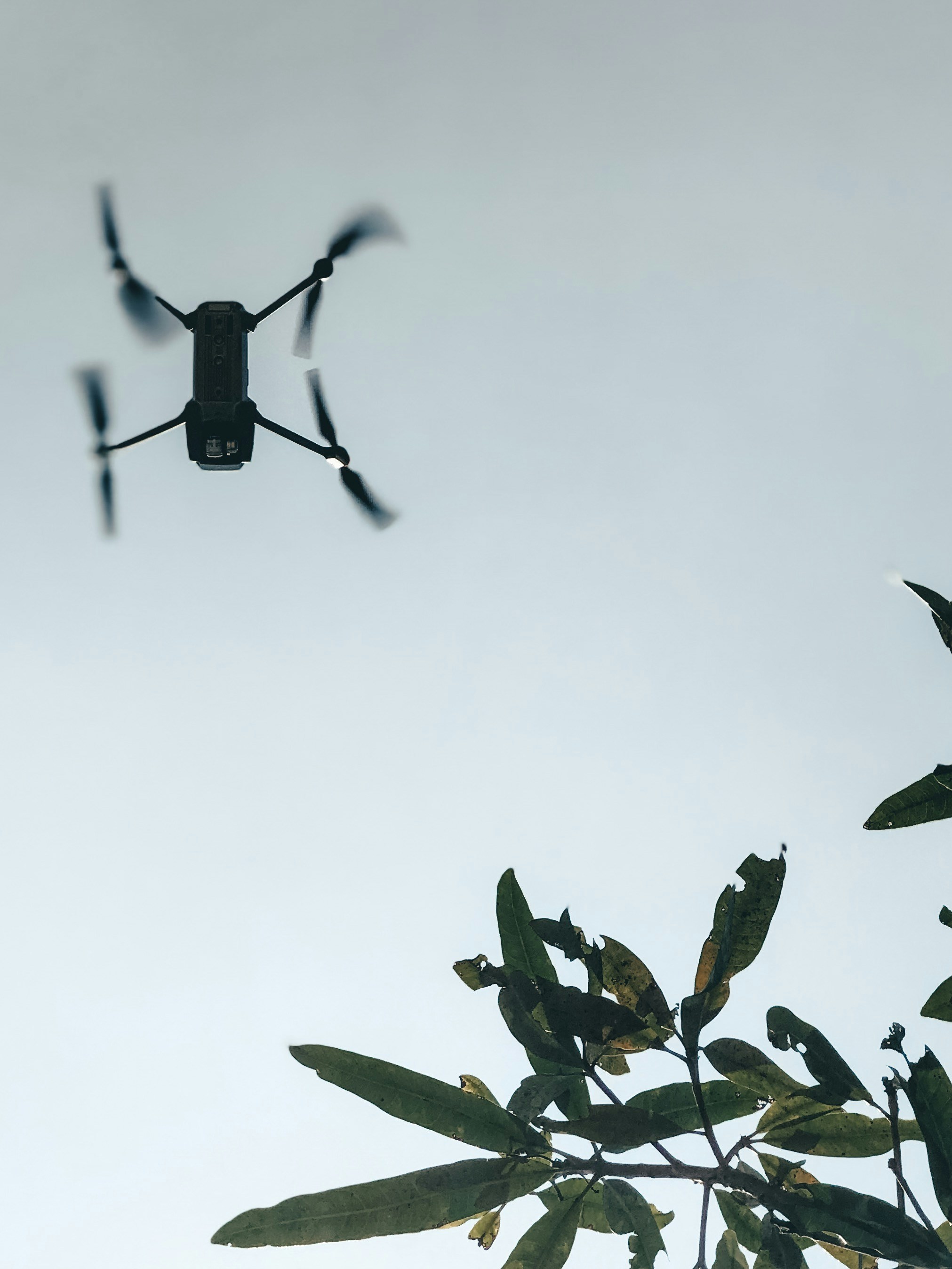
After soaring through the vast landscape of drone statistics, market dynamics, and real-world applications, one thing is crystal clear: drones are no longer just futuristic toys or niche gadgets. They have become powerful tools transforming industries, economies, and everyday life. From the backyard hobbyist capturing stunning aerial selfies to multinational corporations optimizing agriculture and infrastructure, drones are everywhere—and their impact is only accelerating.
We started with a question: How many drones are really flying out there, and what does that mean for you? Now you know—millions of drones buzz across the globe, backed by billions in revenue, driven by innovation, and regulated by evolving laws. The challenges—battery life, public perception, and regulatory complexity—are real but surmountable, with exciting solutions on the horizon.
If you’re thinking about joining the drone revolution—whether as a pilot, entrepreneur, or enthusiast—there’s never been a better time. Our expert team at Drone Brands™ recommends starting with trusted brands like DJI for reliability and innovation, or Autel Robotics if you want to explore alternatives with excellent camera tech. For commercial ventures, consider platforms like Globhe to tap into global drone data services and networks.
Remember, flying drones responsibly and staying informed about regulations is key to keeping the skies safe and open for everyone. So, what are you waiting for? The sky’s not the limit—it’s just the beginning of your aerial adventure!
🔗 Recommended Links: Dive Deeper into the Drone World
👉 Shop Top Drone Brands & Accessories:
- DJI Drones: Amazon | Walmart | DJI Official Website
- Autel Robotics Drones: Amazon | Walmart | Autel Official Website
- Parrot Drones: Amazon | Parrot Official Website
- Skydio Drones: Amazon | Skydio Official Website
- Drone Software & Services: DroneDeploy, Pix4D, Globhe
Books for Drone Enthusiasts & Professionals:
- “Drones For Dummies” by Mark LaFay — A beginner-friendly guide covering everything from buying your first drone to flying safely.
- “The Drone Pilot’s Handbook” by Adam Juniper — Perfect for those looking to deepen their piloting skills and understand commercial applications.
- “Unmanned Aircraft Systems: UAVS Design, Development and Deployment” by Reg Austin — A technical dive into drone engineering and industry trends.
❓ FAQ: Your Burning Drone Questions Answered
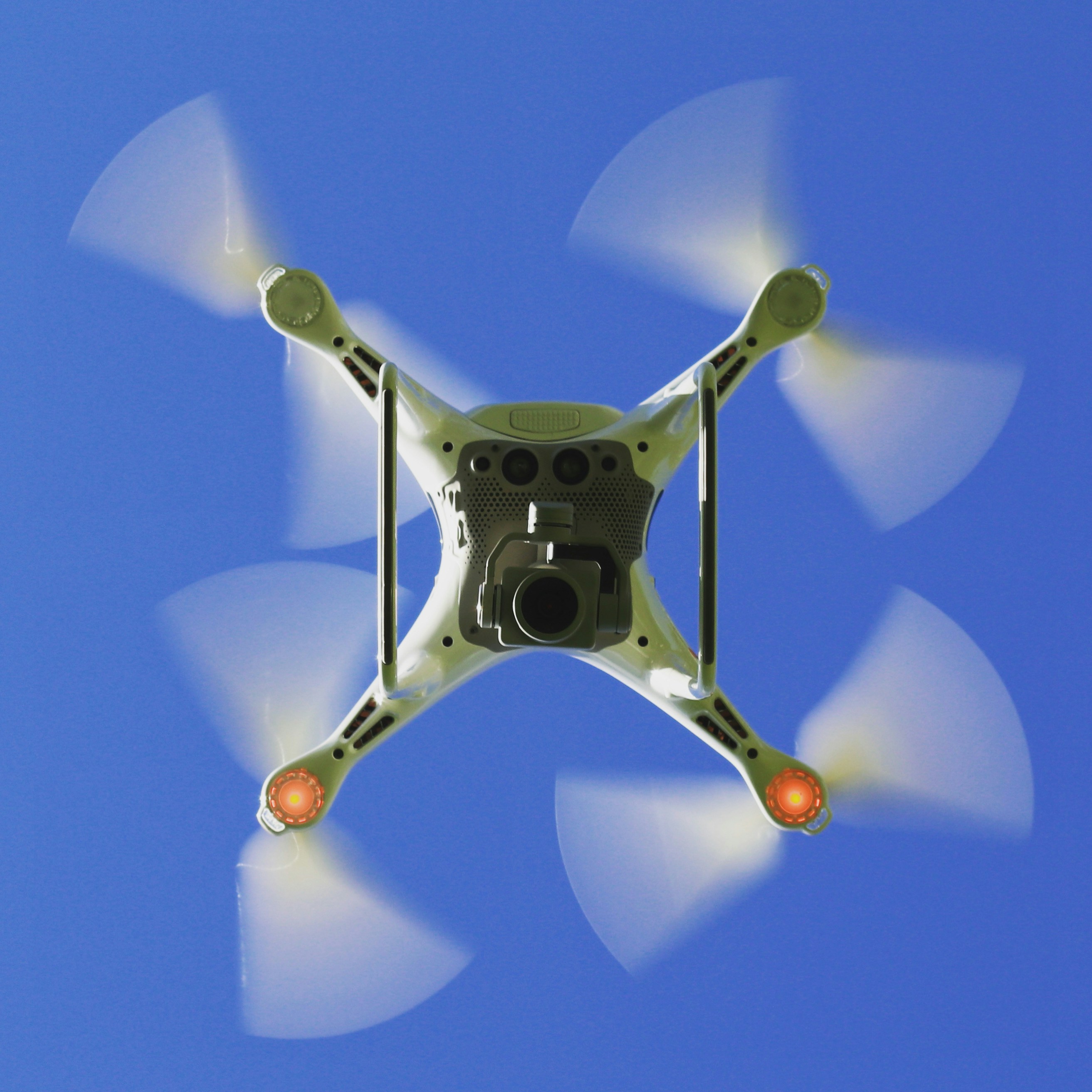
What is the current market size of the drone industry worldwide?
As of 2022, the global drone market reached approximately US$3.64 billion in revenue, with projections estimating growth to US$4.37 billion by 2025 and continuing to expand steadily thereafter (Statista). This includes consumer, prosumer, and commercial drone sales, as well as associated software and services.
Read more about “How Many People Fly Drones? 15 Surprising Facts You Need to Know (2025) 🚁”
How many drones are sold annually across the globe?
Annual drone sales are expected to reach over 10.5 million units by 2030, reflecting a compound annual growth rate (CAGR) of around 3.1% in the mid-2020s. This volume includes hobbyist drones, professional-grade UAVs, and commercial platforms used in various industries.
What are the most popular uses of drones worldwide, including commercial and recreational purposes?
Drones serve a wide range of applications:
- Commercial: Agriculture (precision farming), construction site monitoring, infrastructure inspection, public safety (search and rescue), delivery logistics, environmental monitoring, and mapping/surveying.
- Recreational: Aerial photography and videography, racing, FPV flying, and hobbyist exploration.
The commercial sector is rapidly growing, driven by the efficiency and safety benefits drones provide.
Which countries have the highest number of registered drones and drone operators?
The United States leads with hundreds of thousands of registered drones and certified remote pilots, supported by the FAA’s robust registration system. China is the largest revenue generator and manufacturer, with a massive domestic market and global export footprint. Europe, led by countries like France and Germany, has a growing drone ecosystem regulated under EASA. Emerging markets in Asia-Pacific, Africa, and South America are rapidly expanding drone adoption as well.
What is the projected growth rate of the drone market in the next five years?
The drone market is expected to grow at a CAGR of approximately 3.6% between 2025 and 2030, fueled by technological advancements, expanding commercial applications, and increasing consumer adoption.
Read more about “How Many Drones Are Bought Each Year? 🚁 Shocking 2025 Stats Revealed!”
How many people are employed in the drone industry worldwide, including manufacturers, operators, and service providers?
While exact global employment figures vary, the drone industry supports hundreds of thousands of jobs worldwide, including:
- Manufacturing and assembly workers
- Certified drone pilots and operators
- Software developers and data analysts
- Service providers and maintenance technicians
- Regulatory and compliance professionals
This workforce is growing rapidly as the industry matures and diversifies.
What are the most significant challenges facing the drone industry, including regulatory issues and safety concerns?
Key challenges include:
- Regulatory Complexity: Navigating diverse and evolving drone laws across countries and regions.
- Safety and Airspace Integration: Ensuring drones operate safely alongside manned aircraft, especially for BVLOS flights.
- Battery Life Limitations: Flight endurance remains limited, constraining some commercial applications.
- Public Perception and Privacy: Addressing concerns about surveillance, noise, and safety incidents.
- Talent Shortage: Finding skilled pilots and technical experts to support industry growth.
These challenges are actively being addressed through technology, education, and policy development.
How can new drone pilots ensure they comply with regulations and fly safely?
New pilots should:
- Register their drones where required.
- Obtain necessary certifications (e.g., FAA Part 107 in the US).
- Use official apps like B4UFLY to check airspace restrictions.
- Avoid flying near airports, crowds, or restricted areas.
- Respect privacy and avoid intrusive flights.
- Stay updated on local laws via resources like our Drone Laws and Regulations section.
What emerging technologies will most impact the drone industry in the coming years?
Technologies to watch include:
- Advanced AI and autonomy for fully automated missions.
- Improved battery tech (solid-state, hydrogen fuel cells) extending flight times.
- 5G and beyond enabling real-time high-bandwidth communication.
- Remote ID systems enhancing airspace safety and accountability.
- Swarm technology for coordinated multi-drone operations.
These will unlock new applications and scale existing ones.
Read more about “Who Is the Largest Producer of Drones? Top 16 Giants in 2025 🚁”
📚 Reference Links: Our Sources for Sky-High Stats
- Statista: Drone Market Outlook — https://www.statista.com/outlook/cmo/consumer-electronics/drones/worldwide
- DJI Official Website — https://www.dji.com/
- Autel Robotics Official Website — https://www.autelrobotics.com/
- Parrot Official Website — https://www.parrot.com/en
- Skydio Official Website — https://www.skydio.com/
- FAA UAS Data & Regulations — https://www.faa.gov/uas
- EASA Civil Drones Regulatory Framework — https://www.easa.europa.eu/en/domains/civil-drones
- Globhe – Global Drone Data for Digital Twins — https://www.globhe.com/
- DroneDeploy — https://www.dronedeploy.com/
- Pix4D — https://www.pix4d.com/
- Zipline (Medical Drone Delivery) — https://www.flyzipline.com/
- Wing (Alphabet’s Drone Delivery) — https://wing.com/
- Aloft (Airspace Intelligence) — https://www.aloft.ai/
- B4UFLY App (FAA) — https://www.faa.gov/uas/getting_started/b4ufly
Thanks for flying with us through the world of drone statistics! Ready to take off on your own aerial adventure? Check out our Beginner Drones guides and stay tuned for more expert insights from Drone Brands™.
